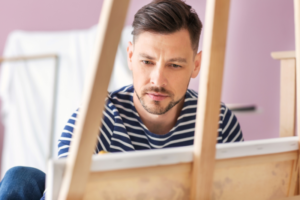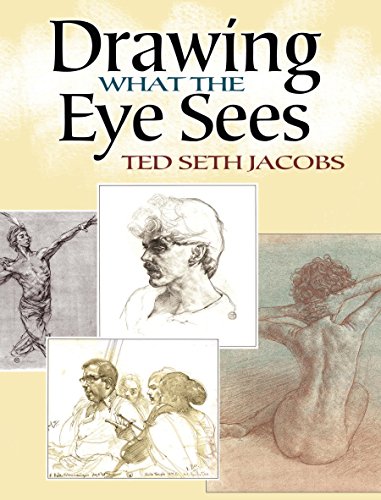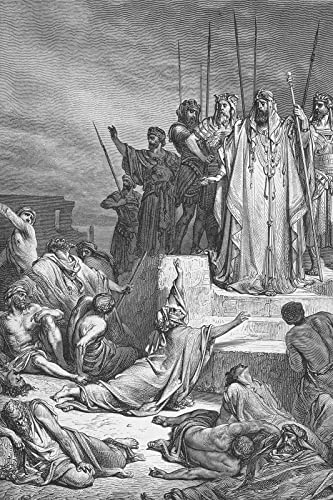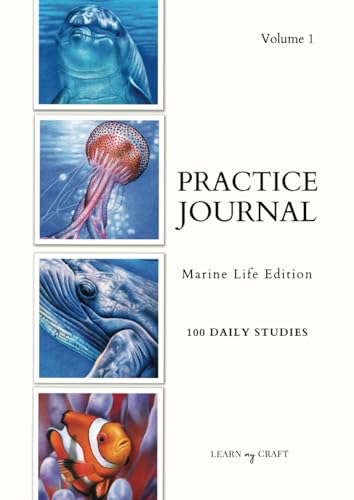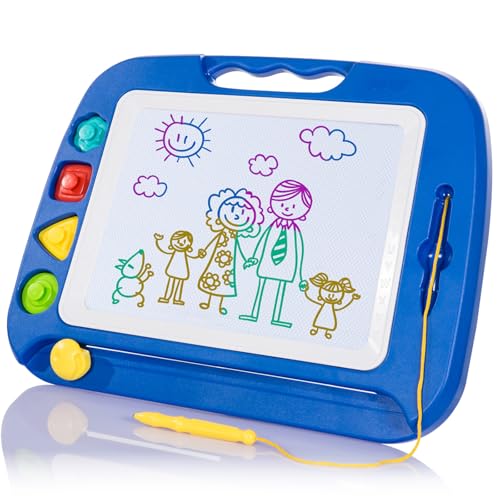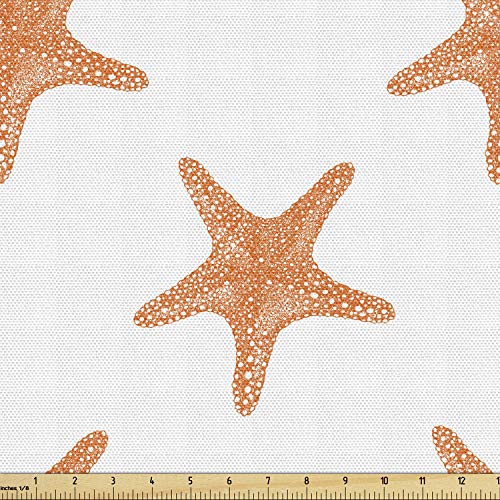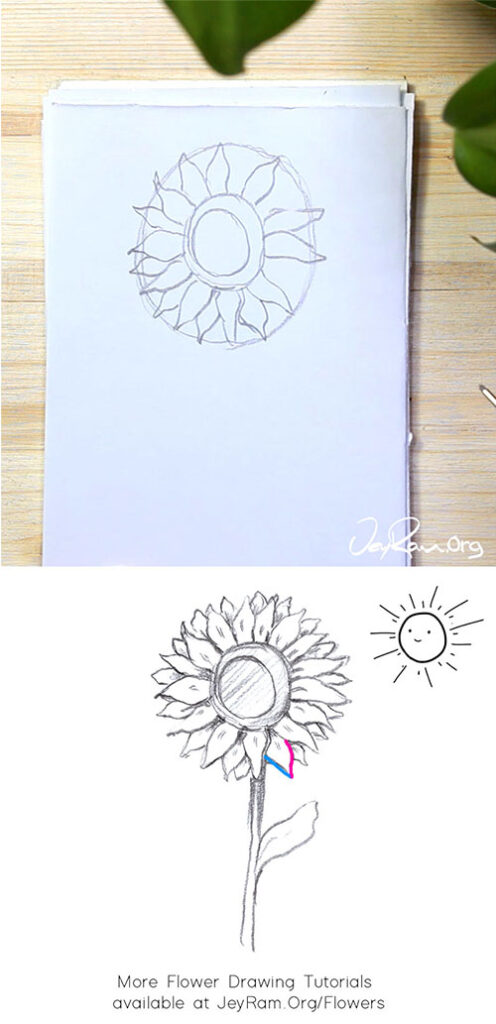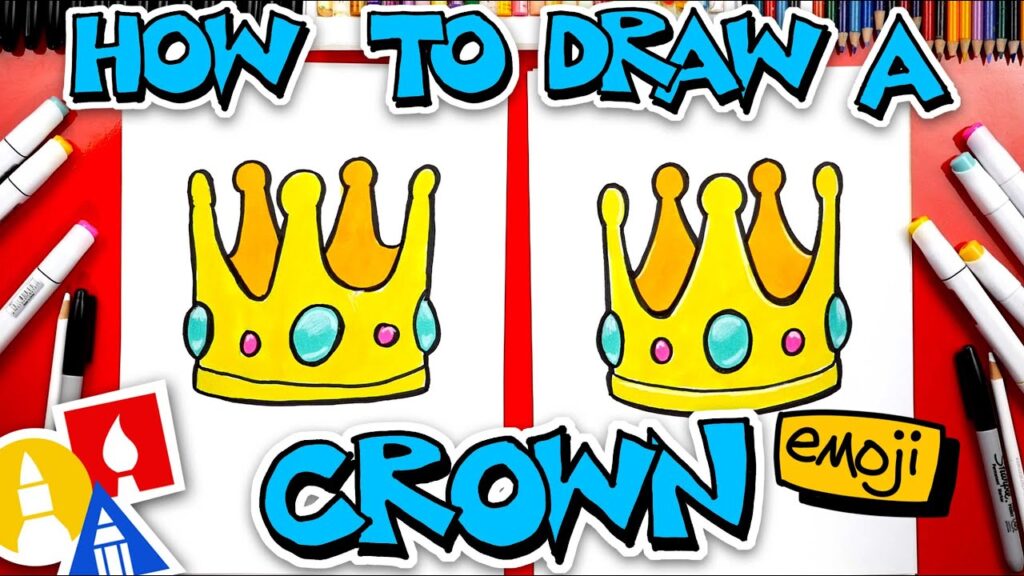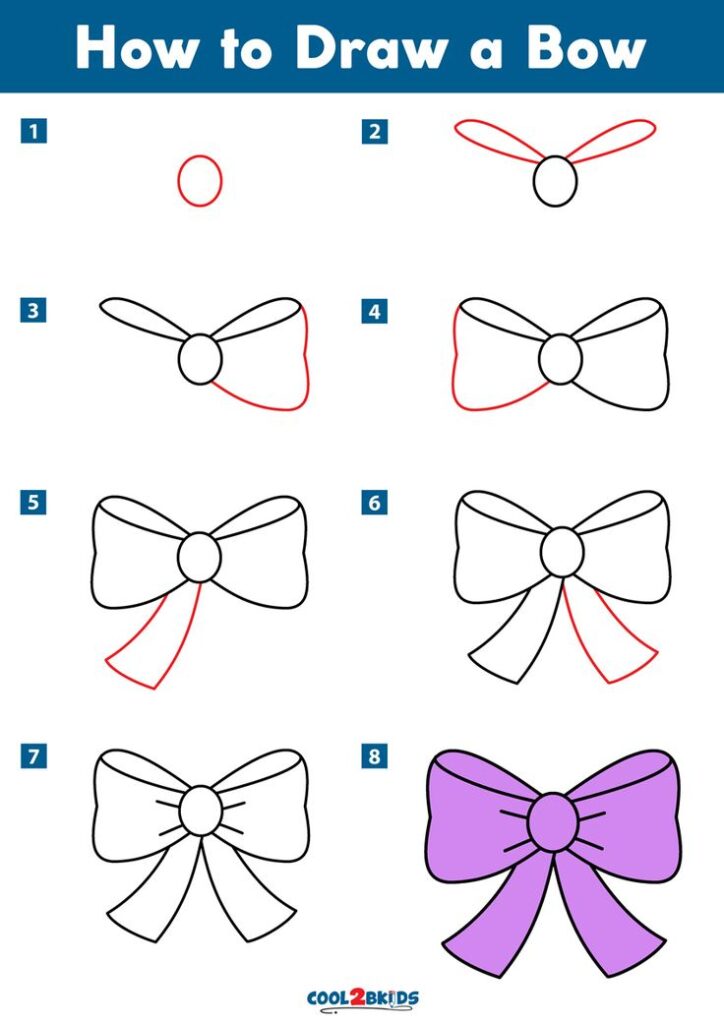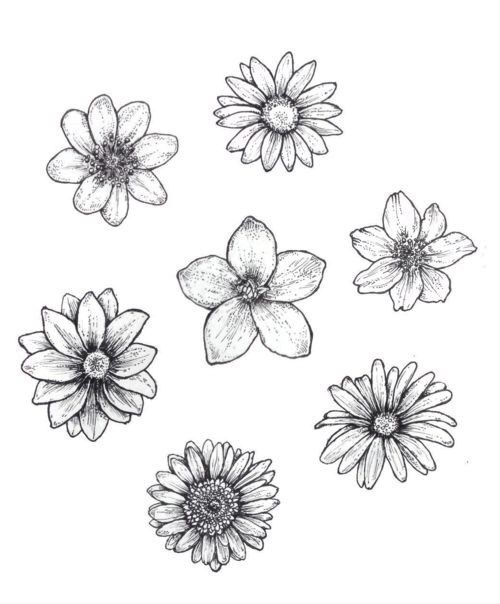Copying can teach art skills, but it’s not the only path. Artists often start by mimicking others, capturing techniques and styles.
Can copying alone make you a good artist? This question intrigues many aspiring creators. Copying has its benefits. It helps with understanding proportions, color, and shading. You learn what works by observing masters. But art is more than imitation. True artistry involves personal expression.
It’s about finding your unique voice. Copying may lay the foundation, but creativity builds the house. This post explores the role of copying in art. It examines how it can help you improve. And it discusses when to move beyond copying. Discover how to harness this method effectively. Let’s delve into the world of art creation together.
Artistic Foundations
Art is a journey, not a destination. Understanding its foundations is key. Aspiring artists often wonder if copying can lead to mastery. This question has intrigued creative minds for ages. Copying plays a role in building skills and confidence. Let’s dive into the role of imitation in art.
Role Of Imitation
Imitation helps artists grasp techniques and styles. It allows beginners to explore different methods. By copying, they learn about color, form, and composition. It also provides a framework to understand complex techniques. Many famous artists started by imitating others. This process can lead to personal growth and originality.
Historical Perspectives
History shows imitation as a common practice. Renaissance artists often copied masters to learn. Leonardo da Vinci studied works of his mentors. This practice enriched his skills and vision. In Japan, apprentices copied their master’s work for years. This disciplined approach honed their skills to perfection. Such examples highlight the value of imitation in learning art.
Copying In Art
Copying in art sparks a lot of debate. Some see it as imitation. Others view it as a learning tool. Artists often begin by copying. They mimic masters to understand techniques. This practice has a rich history. It helps build foundational skills. But can it make you a good artist?
Definition And Scope
Copying in art means reproducing existing works. It involves studying details and techniques. Artists copy to learn. They gain insights into the artist’s mind. This practice spans various forms. Drawing, painting, and sculpting included. The scope is broad. It encourages skill development. Copying aids in understanding composition. It helps grasp color theory and perspective.
Common Misconceptions
Many think copying lacks creativity. They see it as mere imitation. But copying is more than that. It’s a learning process. It offers a deeper understanding. Another misconception is that copying is easy. In truth, it requires skill. To copy well, one must observe. They must understand nuances. This practice sharpens attention to detail. It enhances technical skills. Copying is not the end goal. It’s a stepping stone.
Skills Development
Copying art can help you learn techniques and styles. It builds foundational skills but limits creativity. Developing originality requires practice, exploration, and personal expression to become a good artist.
Becoming a good artist is a journey filled with practice and learning. Copying can be a powerful tool in developing your skills. It allows you to understand techniques and styles, forming a foundation for your own creativity. But how does copying contribute to skills development? Let’s delve into two crucial areas: technical proficiency and an eye for detail.
Technical Proficiency
To build technical proficiency, copying can be immensely helpful. By replicating works of art, you learn various techniques like shading, perspective, and color blending. These are essential skills for any artist. Think about how musicians learn by playing existing songs. Similarly, artists can sharpen their skills by recreating masterpieces. But remember, while copying, pay attention to the process—it’s not just about the final piece. Set specific goals for your copying sessions. Focus on a particular skill, such as mastering brush strokes or capturing light and shadow. This targeted practice will enhance your technical abilities and build confidence.
Eye For Detail
Developing an eye for detail is crucial in art. Copying can train your observation skills, helping you notice nuances in texture, shape, and form. This is where you start seeing what makes each piece unique. When copying, scrutinize the small elements that might be overlooked. Ask yourself: what makes this artwork special? By doing this, you start appreciating the intricacies and layers in art. Consider creating a checklist of details to observe. This could include the way lines intersect, how colors transition, or the play of shadows. Engaging in such detailed observation will refine your artistic vision. Copying should not be mindless repetition. It’s a learning experience that can enhance your technical skills and detail-oriented observation. How will you incorporate these insights into your artistic journey?

Learning Techniques
Learning techniques is a pivotal part of becoming a good artist. While copying famous artworks might seem like the easy route, it’s the skills you develop along the way that truly matter. Every artist starts somewhere, often by mimicking the works they admire. This process is not about replication but about understanding the techniques that make those works stand out. It’s about how you can use those techniques as a stepping stone to develop your unique style.
Observation Skills
Strong observation skills are the backbone of effective learning techniques. Copying an artwork requires you to look closely and see details you might otherwise miss. This practice sharpens your eye and teaches you to notice the nuances in color, shape, and texture.
Think about the time you spent trying to replicate the light in Van Gogh’s “Starry Night.” You were not just copying; you were training your eye to see how light dances across the canvas. How can you apply this observation to your own creations?
Mastering Techniques
Copying can help you master different artistic techniques. When you attempt to replicate a piece, you are forced to understand the strokes, the layering, and the use of materials. This hands-on experience is invaluable.
Consider how you tried to capture the brush strokes in Monet’s “Water Lilies.” Each stroke taught you something new about movement and fluidity. As you practice these techniques, think about how they can enhance your own style.
What’s stopping you from experimenting with these techniques in your own work? Remember, the goal is not to become a clone of another artist but to use their techniques as a foundation for your growth.
Creativity And Innovation
Copying art can spark creativity, serving as a learning tool for aspiring artists. Originality develops through practice and experimentation. Emulating others lays a foundation, but true artistry emerges from personal expression.
Creativity and innovation are the heart of artistic expression. They push boundaries and bring fresh perspectives. For many aspiring artists, copying is a starting point. But how does copying relate to creativity and innovation? It can be a useful tool if done with intention. It helps in understanding techniques and developing skills. But true artistry requires moving beyond mere replication.
Beyond Replication
Copying teaches foundational skills. It helps grasp proportion, color, and form. Artists learn by observing and imitating masters. But staying at this stage limits growth. To become a good artist, one must transcend replication. Innovation begins when artists inject originality into their work. This is where creativity thrives. It involves altering and adapting ideas. Artists blend influences to create something unique. This process fosters a deeper understanding of art.
Finding Personal Style
Developing a personal style is crucial for any artist. It’s the signature that sets one apart. Copying can be a stepping stone in this journey. It helps in recognizing what resonates personally. But to truly shine, artists must explore their own voice. Experimentation leads to discovering preferences. Trying different techniques, materials, and subjects is key. This exploration aids in shaping a distinct style. An artist’s personal style is a blend of learned skills and individual expression.

Ethical Considerations
Copying can help artists learn, but it’s important to respect original creators. Ethical considerations involve acknowledging sources. Balancing learning with creativity ensures growth while honoring artistic integrity.
Embarking on the journey to become a good artist often raises questions about the right path to take. Copying is a common method used by many beginners to learn techniques and styles. However, it’s crucial to consider the ethical boundaries of this practice. Should you merely imitate, or find inspiration to create your own unique work? Understanding ethical considerations can guide you towards a more respectful and original approach to artistry.
Plagiarism Vs Inspiration
Copying someone else’s artwork without permission can be seen as plagiarism. It disrespects the original artist’s hard work and creativity. Instead, use existing artworks as a source of inspiration. Notice the techniques and styles that resonate with you, then add your personal touch. Ask yourself: How can I use these elements to create something new and unique? Think about famous artists like Picasso, who said, “Good artists copy, great artists steal.” He didn’t mean to literally take others’ work, but to absorb influences and transform them into something distinctively his own. Reflect on this next time you admire a piece of art. How can you learn from it without crossing ethical lines?
Respecting Originality
Acknowledging the source of your inspiration is a simple yet powerful act. It shows respect to the original creator and positions you as a thoughtful artist. When you share your work, mention what inspired you and how it influenced your creative process. This not only builds credibility but also enriches the narrative of your artwork. Originality is more than just avoiding direct copies; it’s about developing your voice. As you practice, strive to blend different influences and experiment with new ideas. It’s a journey of self-discovery. Are you ready to explore the boundaries of your creativity without infringing on others’ rights? Remember, the art world values innovation and authenticity. By respecting ethical considerations, you not only honor the community but also pave your own path to becoming a respected artist.
Benefits Of Copying
Copying famous works can enhance your skills, helping you understand techniques and styles. It serves as a practical learning tool, offering insights into an artist’s approach and creativity. Embrace copying as a stepping stone towards developing your unique artistic voice.
Copying might seem like a shortcut. Yet, it holds great value. Many artists start by imitating others’ work. This is not about stealing ideas. It’s about learning from those who came before. Copying can be a powerful tool in an artist’s journey. It offers numerous benefits that can shape your skills and confidence.
Building Confidence
Copying builds your confidence. You learn by observing and replicating. Each brushstroke or pencil line boosts your self-assurance. You see improvement with each attempt. This steady progress encourages you to keep going. Confidence grows as you overcome challenges in the artwork. Copying gives you a safe space to practice and learn.
Expanding Skillset
Imitating art helps expand your skillset. You explore different techniques and styles. Experimenting with varied mediums becomes easier. You understand color palettes and compositions better. Studying art pieces broadens your artistic horizons. You pick up new methods and incorporate them into your work. This enriches your own creative process.
Balanced Approach
A balanced approach can enhance your artistic skills significantly. Copying art is a common practice among artists. It helps you understand techniques and styles. But relying solely on copying limits your creativity. Balancing this practice with original work and learning is key. This approach fosters growth and innovation in your art journey.
Integrating Original Work
Creating original pieces is crucial for artistic growth. It allows self-expression and personal style development. You need to experiment with different ideas. This helps in building confidence and a unique voice in art. Original work challenges you to think creatively. This process is essential for becoming a good artist.
Continuous Learning
Learning should be an ongoing process for every artist. Exposure to new techniques enhances your skills. Workshops and art classes offer valuable knowledge. Reading about art history provides inspiration. Observing other artists’ work can also be beneficial. Each learning experience adds to your creative toolbox. This continuous process keeps your art evolving.
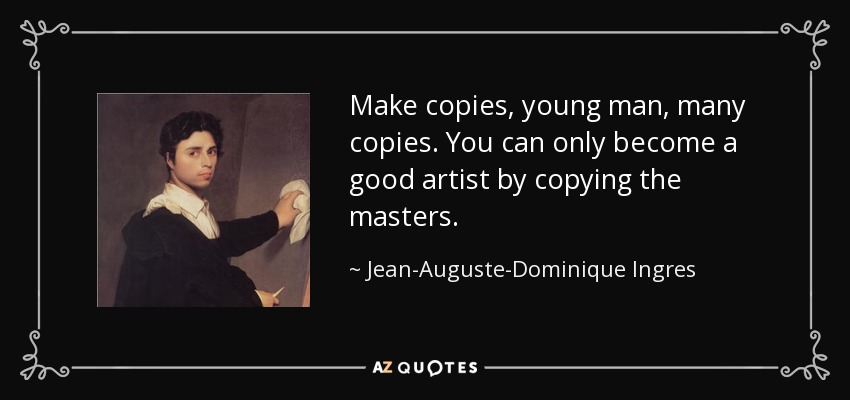
Frequently Asked Questions
Does Copying Make You A Better Artist?
Copying can enhance artistic skills by teaching techniques and styles. It helps artists understand composition and develop their creativity. This practice builds confidence and improves proficiency. However, it’s essential to evolve and create original work to truly grow as an artist.
Balance between copying and originality is key for artistic development.
Can You Learn To Draw Just By Copying?
Yes, copying can help you learn to draw by improving observation skills and technique. Practice enhances creativity and style.
Is Copying The Best Way To Learn?
Copying can help you understand concepts, but it’s not the best way to learn. Active engagement and practice enhance learning. Combining methods like reading, writing, and discussing deepen comprehension. Develop critical thinking skills by analyzing and applying information. This approach fosters long-term knowledge retention and skill mastery.
Does Copying Count As Drawing?
Copying can be considered drawing. It involves reproducing an image, which requires drawing skills. Many artists start by copying to improve their technique. Originality and creativity are vital for advancing beyond copying.
Conclusion
Copying can be a helpful art technique. It allows artists to learn. They understand different styles and methods. But real creativity begins with original ideas. Copying alone won’t make you a great artist. Practice and experimentation lead to true growth.
Finding your unique voice is essential. Make your art personal and authentic. Blend learned techniques with your imagination. Explore beyond the limits of copying. Develop your own style. This is how you become a good artist. Remember, art is about expressing your own vision.
Embrace creativity and enjoy the journey.


